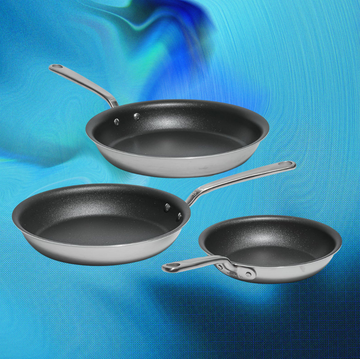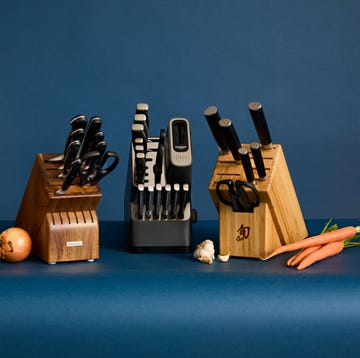4 Best Meat Cleavers, According to Experts
We've picked the best knives for every budget.

We've been independently researching and testing products for over 120 years. If you buy through our links, we may earn a commission. Learn more about our review process.
Growing up, my family had a large kitchen tool I affectionately called the "watermelon knife," because it was sharp and strong enough to slice through a large melon or winter squash like warm butter. As an adult, I discovered that this menacingly large knife — almost as wide as it is long — is actually called a meat cleaver.
Despite being an avid cook, I’ve never seen the point of buying a meat cleaver when chef’s knives are so versatile. Aside from slicing up the occasional melon, I wondered, what would make a cleaver worth adding to my knife collection? To find out, I spoke with the experts in the Good Housekeeping Institute Kitchen Appliances and Innovation Lab, who have tested hundreds of knives over the years. Their verdict? Meat cleavers are absolutely worth having in the kitchen.
“The meat cleaver is a versatile tool perfect for tasks that require extra heft and durability,” says Nicole Papantoniou, the director of the Kitchen Appliances Lab. “Its large, heavy blade is designed to cut through sinew, meat and even some bones, making it ideal for breaking down chickens or slicing meat into chunks.”
I worked with GH's cooking experts to identify four cleavers that meet different needs — from heavy-duty butchering to more versatile kitchen tasks. (For example, thanks to its long edge and flat surface, a cleaver is also great for chopping vegetables and scooping them from cutting board to pan.) Ahead, the best meat cleavers you can buy, based on our team's expert insights and firsthand experience.
Perry Santanachote (she/her) has more than 15 years of experience in service journalism, specializing in food and consumer goods. She tests and reports on kitchen appliances and cooking tools. She also evaluates food products and cleaning supplies. She’s an experienced writer, product tester and recipe developer who has worked in labs, test kitchens and media organizations, including Thrillist and Consumer Reports.
Nicole (she/her) is the director of the Good Housekeeping Institute's Kitchen Appliances and Innovation Lab, where she has overseen content and testing related to kitchen and cooking appliances, tools and gear since 2019. She’s an experienced product tester and recipe creator, trained in classic culinary arts and culinary nutrition. She has worked in test kitchens for small kitchen appliance brands and national magazines, including Family Circle and Ladies’ Home Journal.

Readers Also Read

'Jeopardy!' Will Look Different for Season 42

'Rookie' Showrunner Teases Chenford Romance in S8

'Fire Country' Fans Demand Character Return in S4

Who Is Derek Hough's Wife, Hayley Erbert?













